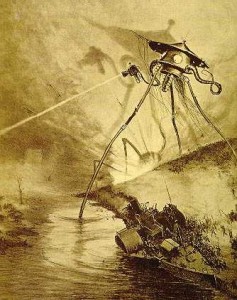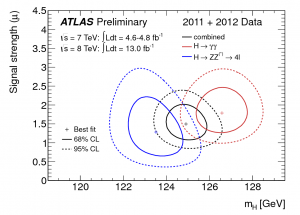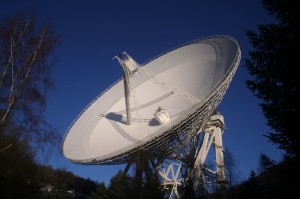Subscription Center


December 18th, 2012 |
![]() 2
2

Type 2 diabetes has long been thought of as a chronic, irreversible disease. Some 25 million Americans are afflicted with the illness, which is associated with obesity and a sedentary lifestyle, as well as high blood pressure. Recent research demonstrated that gastric bypass surgery—a form of bariatric surgery that reduces the size of the stomach—can [...]
Keep reading »
December 18th, 2012 |
![]() 3
3

Last week, I and some 200 other attendees of the Global Trends 2030: U.S. Leadership in a Post-Western World conference got a thought-provoking look at the current “megatrends” leading to four possible futures for the world some 10 to 15 years from now. Cutting across all of them is the disruptive influence of emerging technologies—which [...]
Keep reading »
December 18th, 2012 |
![]() 6
6

December 21, according to much-hyped misreadings of the Mayan calendar, will mark the end of the world. It’s not the first “end is nigh” proclamation—and it’s unlikely to be the last. That’s because, deep down for various reasons, there’s something appealing—at least to some of us—about the end of the world. Enjoy the Self-Fulfilling [...]
Keep reading »
December 17th, 2012 |
![]() 4
4

The slope of an unnamed mountain near the moon’s north pole will be the final destination for NASA’s twin GRAIL spacecraft, which are scheduled to crash into the lunar surface at high speed today. The impacts are planned for 5:28 P.M. Eastern Standard Time. The twin probes, nicknamed Ebb and Flow, have orbited the moon [...]
Keep reading »
December 14th, 2012 |
![]() 1
1

The slow loris shouldn’t be a difficult object of study. For one thing, it’s slow—very slow (think sloth slow). And these small primates, which are unique in possessing a toxic bite to ward off predators, are charismatic due in large part to their compelling, wide-eyed faces. But they are also nocturnal, and they tend to [...]
Keep reading »
December 14th, 2012 |
![]() 61
61

A month ago scientists at the Large Hadron Collider released the latest Higgs boson results. And although the data held few obvious surprises, most intriguing were the results that scientists didn’t share. The original Higgs data from back in July had shown that the Higgs seemed to be decaying into two photons more often than [...]
Keep reading »
December 13th, 2012 |
![]() 10
10

The mass of the proton in relation to its much lighter counterpart, the electron, is known to great precision: the proton has 1836.152672 times the mass of the electron. But has it always been so? Quite possibly, according to new research which taps the cosmos as a vast fundamental-physics laboratory. A study of a distant [...]
Keep reading »
UCAR president Thomas Bogdan leads the movement to form a U.S. Weather Commission. Photo by Carlye Calvin Despite the ever-present caveat that predicting the weather is a difficult and inexact science, it seems that forecasts have been getting better and better. Yet some leaders in meteorology say continued improvement is not guaranteed and could even [...]
Keep reading »
December 11th, 2012 |
![]() 21
21

Once upon a time a tiny human species with large feet shared the planet with our own kind. It hunted giant rats and miniature cousins of the elephant, defended its kills from monstrous storks and dodged fearsome dragons. This is not the plot of a lost Tolkien book. This really happened. I’m referring, of course, [...]
Keep reading »
December 10th, 2012 |
![]() 1
1

It never ceases to amaze me how much the world says it wants to save children’s lives and how rarely it tries to do the one thing that has been proven to protect more youngsters than anything else—keeping their mothers alive. (Maybe if it was called “orphan prevention?”) That is why I was so pleased [...]
Keep reading »